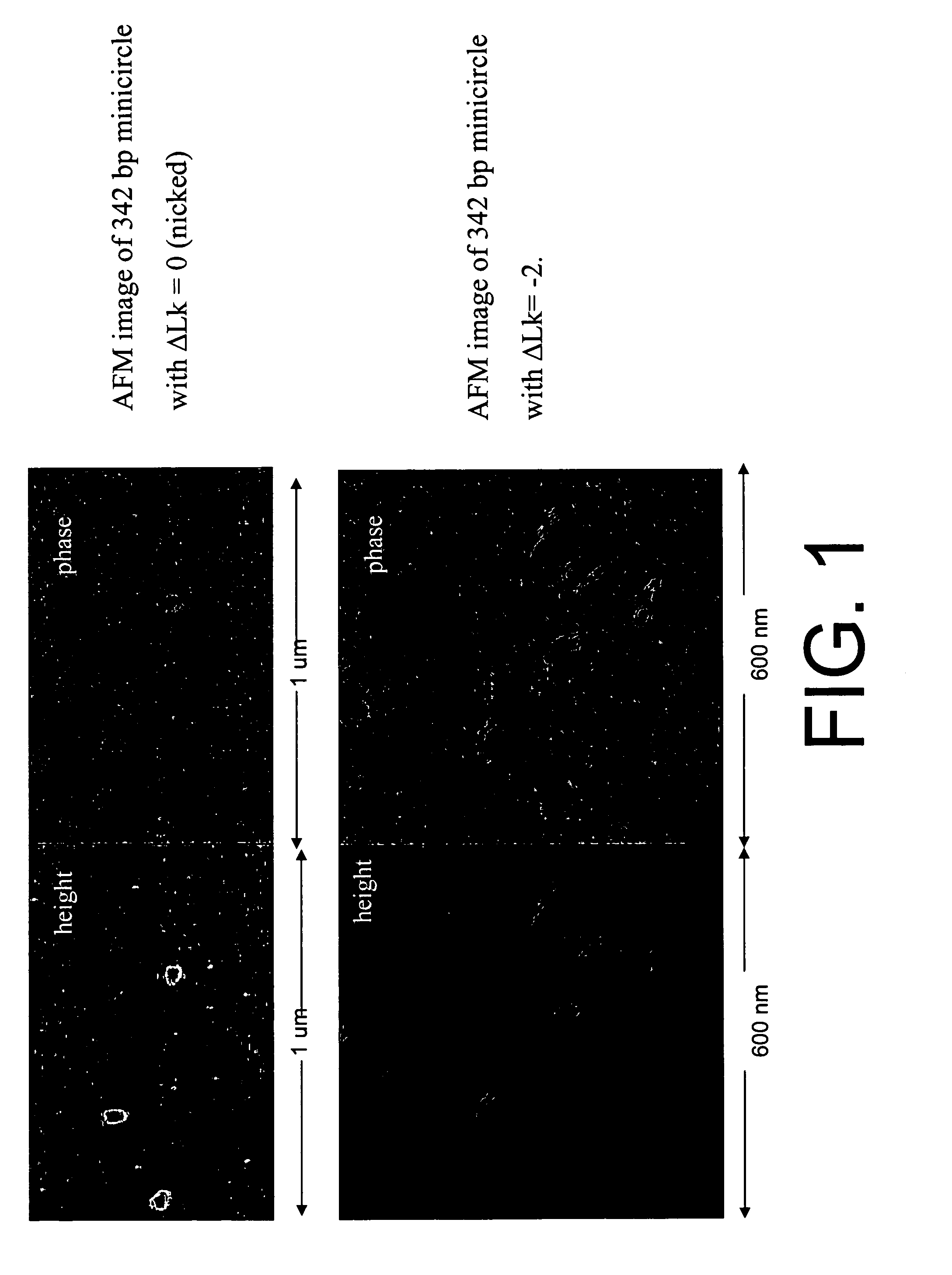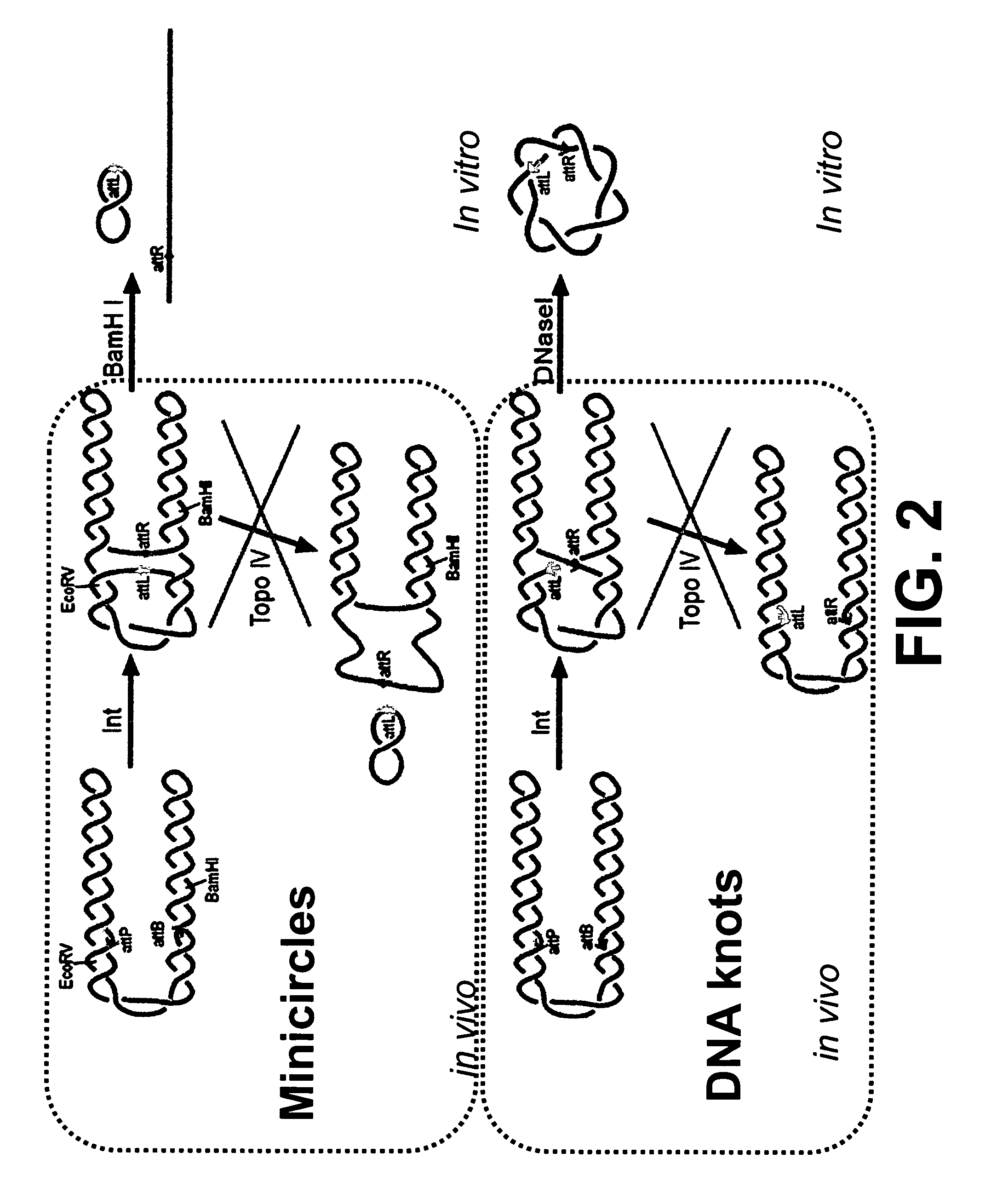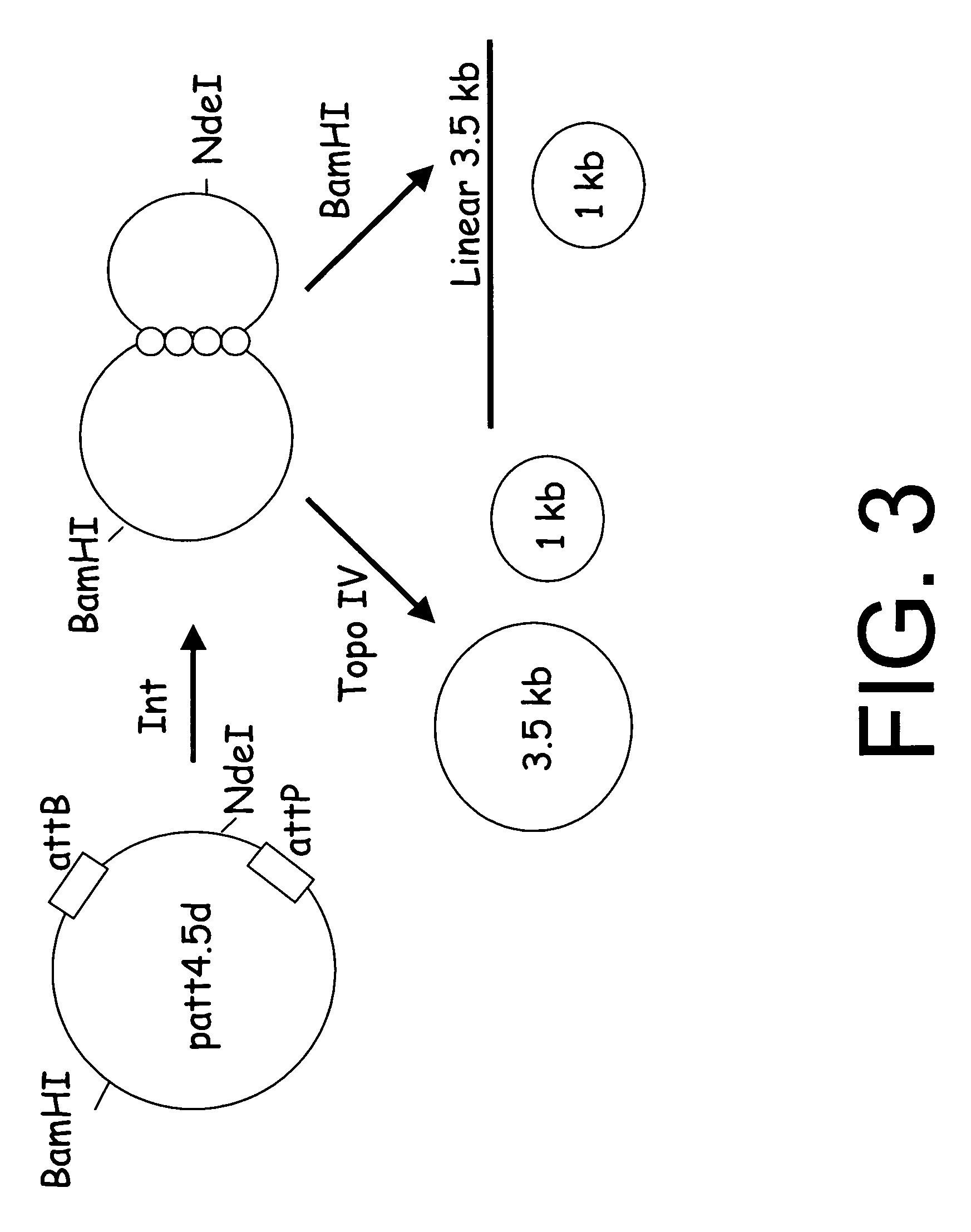Generation of minicircle DNA with physiological supercoiling
a technology of dna supercoiling and minicircle, which is applied in the field of generating minicircle dna with physiological supercoiling, can solve the problems of difficult to produce and purify in significant quantity, and dna minicircles lacking an origin of replication
- Summary
- Abstract
- Description
- Claims
- Application Information
AI Technical Summary
Benefits of technology
Problems solved by technology
Method used
Image
Examples
example 1
[0049]Site-specific recombination of a plasmid containing site-specific recombination sites can result in catenated products. Described herein is the production of such catenated products in vivo under conditions such that topoisomerase IV is inhibited, e.g., through chemical inhibitors such as, for example, norfloxacin. Also described are uses of such minicircles as substrates for proteins that act on DNA.
[0050]Plasmid patt4.5D has an attB and attP site in the same orientation (FIG. 3). The sites are separated by 1 kb. The plasmid was transformed into LZ54, which expressed γ integrase under the control of a temperature sensitive γ repressor. The LZ54 strain also has a functional topoisomerase IV and a drug-resistant gyrase. The transformed cells are grown to mid log (OD=4) in a fermentor, which enables exponential growth to be maintained at much higher cell densities than in shaker flasks, and shifted to 42° C. to induce expression of integrase. Norfloxacin is added to inhibit the ...
example 2
Religation of Nicked and Linearized DNA Minicircles
[0053]Nicked minicircles were isolated as described above during the preparative gel electrophoresis purification step, or created by nicking supercoiled DNA minicircles with the nicking endonuclease N.BbvCIB (New England Biolabs; other nicking endonucleases would also be contemplated by the methods of the inventions as well as enzymes with a nicking activity such as, for example, nicking endonucleases and DNaseI). The nicked minicircles were then ligated in the presence of ethidium bromide (EtBr) in various amounts. As shown in FIG. 6, efficient ligation occurs with no detectable intermolecular contaminants. The presence of the DNA intercalator, EtBr, produces hyper-negatively supercoiled minicircles (FIGS. 6 and 7).
[0054]Alternatively, current methods ligate linearized minicircles in the presence of EtBr to produce supercoiled DNA minicircles (FIG. 8). However this must be performed at very low DNA concentrations to prevent the fo...
example 3
Use of Supercoiled DNA Minicircles as Substrates
[0057]A 342 bp supercoiled DNA minicircles with an EcoRV binding site engineered into it was used as a substrate for DNA binding studies. Gel-shift assays were performed using either radiolabeled substrates (see Example 2). Alternatively, non-labeled substrates could be used, followed by detection with, for example, SYBR gold staining, however, such detection methods require more substrate. Examples of binding using radiolabeled substrates are shown in FIG. 11. Varying concentrations of EcoRV (8 pM to 1 μM) were incubated with 50 pM of the minicircle substrate. The products were electrophoresed on a 5% native polyacrylamide gel for 2-3 hours at 140V in the presence of 10 mM Ca2+. These studies indicate different binding properties of EcoRV to different substrate topoisomers (Linear substrate, KD=36.3 pM; Relaxed substrate, KD=18.8 pM; ΔLK=−1, KD=4.8 pM; ΔLK=−2, KD=4.5 pM; ΔLK=−3, KD=10.6 pM; ΔLK=−4, KD=13.9 pM). The differences in KD s...
PUM
| Property | Measurement | Unit |
|---|---|---|
| concentrations | aaaaa | aaaaa |
| reaction rate | aaaaa | aaaaa |
| size | aaaaa | aaaaa |
Abstract
Description
Claims
Application Information
 Login to View More
Login to View More - R&D
- Intellectual Property
- Life Sciences
- Materials
- Tech Scout
- Unparalleled Data Quality
- Higher Quality Content
- 60% Fewer Hallucinations
Browse by: Latest US Patents, China's latest patents, Technical Efficacy Thesaurus, Application Domain, Technology Topic, Popular Technical Reports.
© 2025 PatSnap. All rights reserved.Legal|Privacy policy|Modern Slavery Act Transparency Statement|Sitemap|About US| Contact US: help@patsnap.com



